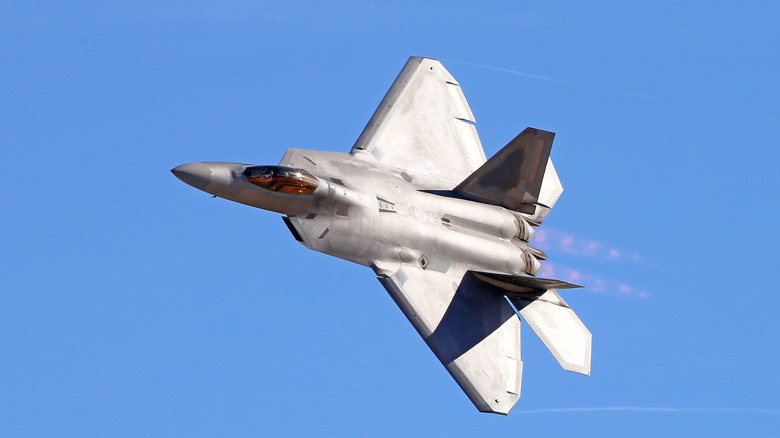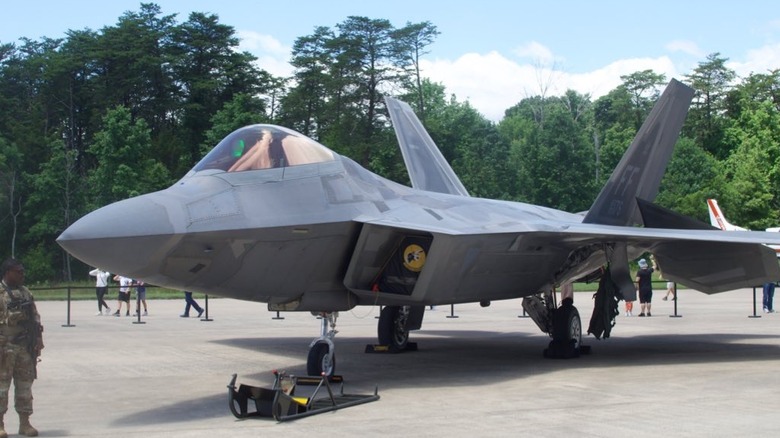This Fighter Jet Is So Advanced That Exporting It From The US Is Banned
There are a number of incredibly advanced fighter jets in the skies today. European countries have the Eurofighter Typhoon that performs a variety of roles with ease. China has the elusive J-20 stealth fighter, and Russia is pioneering its own stealth efforts with the Sukhoi Su-57. All of those fighters, however, pale in comparison to the F-22 Raptor, perhaps the meanest and stealthiest fighter jet in the sky today.
Not particularly prone to hyperbole, the United States Air Force describes the F-22 as such: "The F-22 cannot be matched by any known or projected fighter aircraft." No matter what China, Russia, or even allied countries are working on, there's a good chance the F-22 Raptor holds an advantage. The USAF has good reason to be that confident. The F-22 Raptor is capable of speeds over Mach 2 and has enough stealth tech onboard to turn it practically invisible to opposing radar. But it isn't just fast and stealthy. It has a 20 mm rotary cannon for close-up encounters and can carry upwards of six air-to-air missiles internally.
The F-22 is so advanced, in fact, that it has not been offered for export outside of the United States. However, the Raptor's newest counterpart, the F-35 Lightning II, is available to any country the U.S. considers an ally, but the Raptor has to stay home.
A secret that's written into law
Briefly, all the way back in 2007, U.S. lawmakers and Japan dabbled in the idea of exporting the F-22. However, that idea was shot down. Although Japan and the United States are longtime allies and already share defense tech, its proximity to China and concerns about the technology getting stolen trumped any plans to export.
The F-22 is a big enough player in the air-to-air combat game that its mere introduction to another country's air force raised concerns about "undermining regional stability," according to the U.S. military's Defense Technical Information Center (DTIC).
The F-22's export ban goes even further than a general agreement not to share the technology. Its ban is explicitly written into law. The 1998 Department of Defense Appropriation Act has language that reads (via Congress): "None of the funds made available in this Act may be used to approve or license the sale of F-22 advanced tactical fighter to any foreign government."

